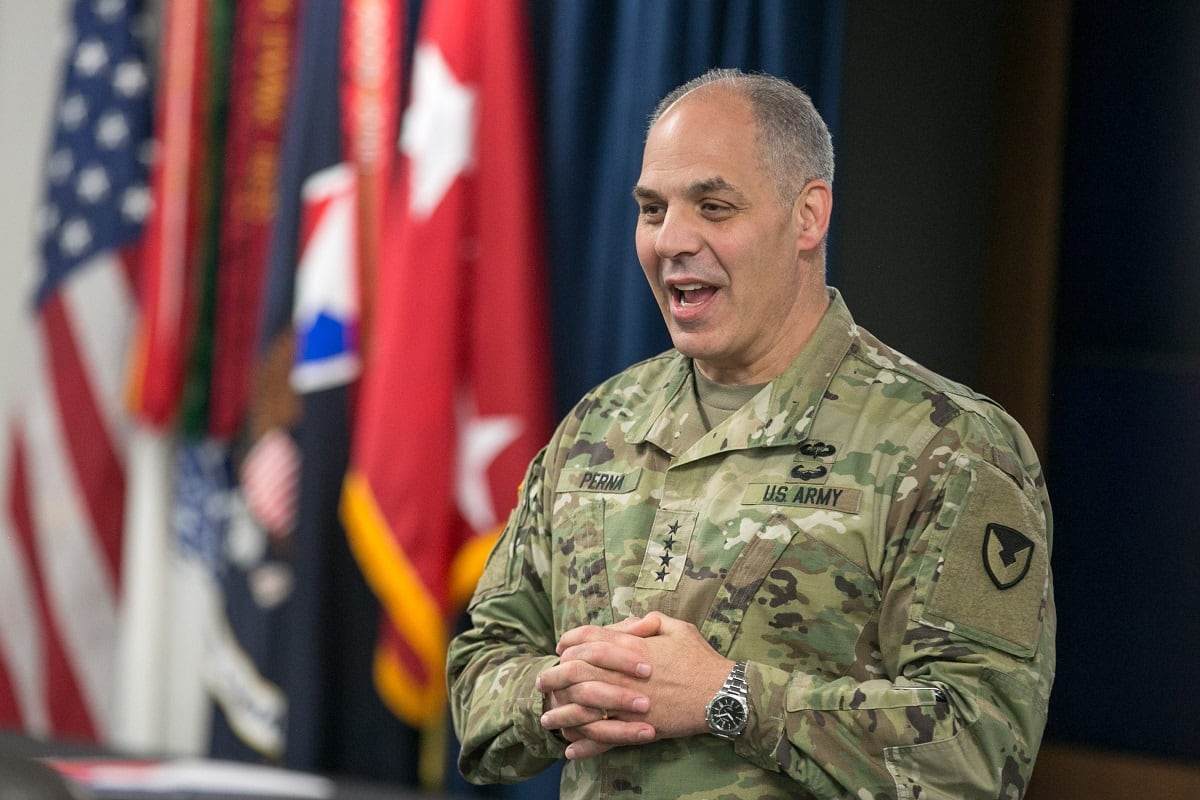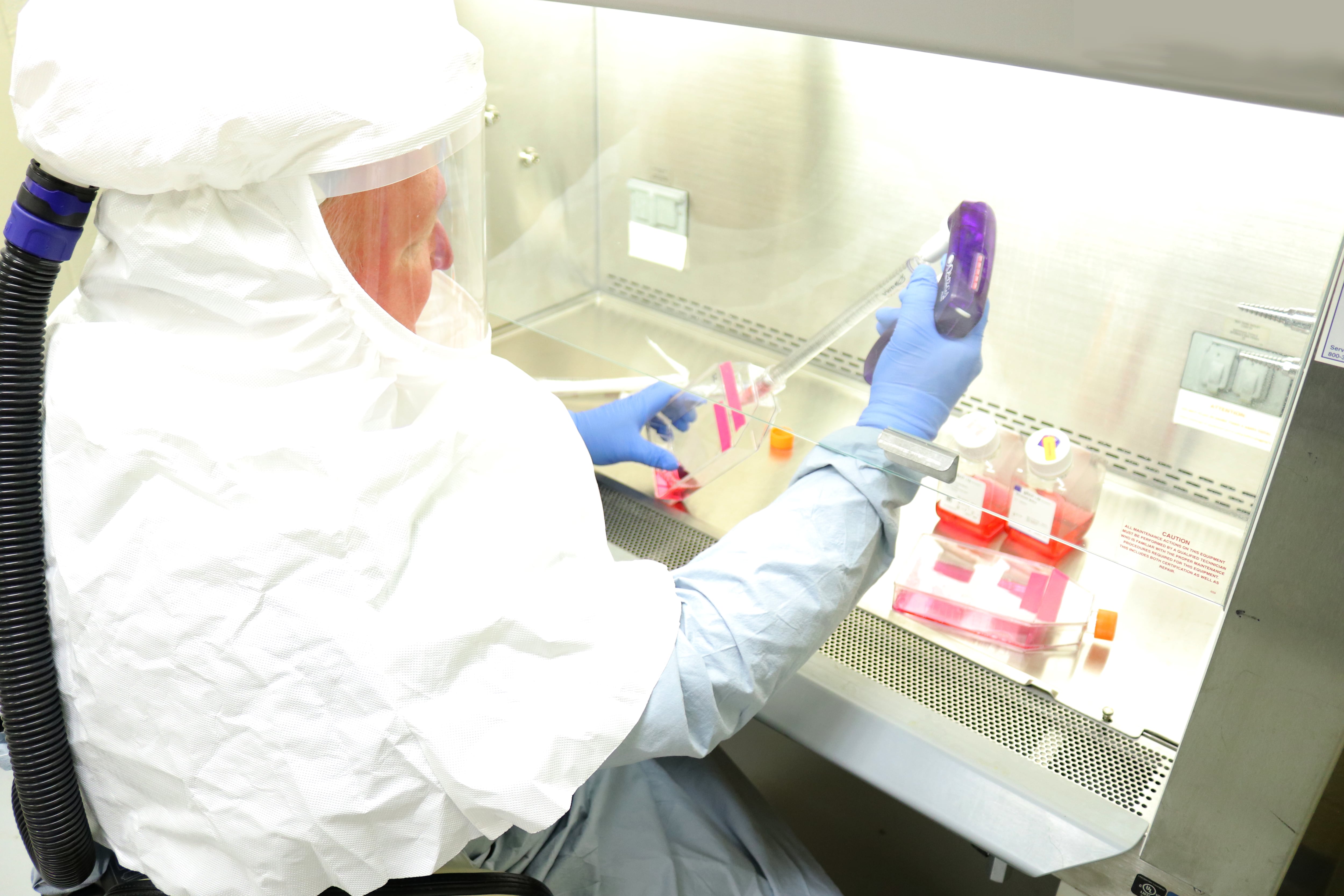Army medical experts involved in testing COVID-19 vaccine candidates developed by outside laboratories are also working to develop their own vaccine, one that can give them the building blocks to combat future strains of the virus if mutations arise.
The first few vaccines being “queued up” for what the White House recently dubbed “Operation Warp Speed” include those by the companies Moderna, AstraZeneca and Johnson & Johnson, Army researchers involved in the project said during a telephone call with reporters Tuesday.
Moderna’s candidate is “very, very likely to be the first major vaccine to be tested in large scale,” said Nelson Michael, director of the Center for Infectious Disease Research at Walter Reed Army Institute of Research.
But Army researchers are developing another vaccine, added Kayvon Modjarrad, the institute’s director of emerging infectious diseases. Their vaccine is being designed with a “long-term approach” to combating new strains of the novel coronavirus.
“There’s no evidence currently that there are new strains,” Modjarrad cautioned. But the vaccine his team is developing would help researchers more quickly fight any mutated strains should they arise.
“We have been vaccinating hundreds and hundreds of mice with different versions of our vaccine and we will be making the decision as to which one is the best one to take forward for manufacturing next week," Modjarrad said. "And then, ultimately, to a first-in-human clinical trial in the late summer.”
Human data obtained from those trials will inform the advancement of the other vaccines being pursued by Operation Warp Speed, Modjarrad added.
“Even though it will not be one of those first four vaccines that initially go into large scale testing, we believe that ... with coronavirus in general and not just this particular one, we may be onto something very good," Michael said.
RELATED

In mid-May, President Donald Trump announced that Operation Warp Speed would harness private sector partners and government agencies to deliver a COVID-19 vaccine by January 2021.
Modjarrad said the timeline handed down to deliver the vaccine is “unprecedented” but is “very much possible." Historically, the time from when a new virus has been discovered to when a vaccine becomes available “hasn’t changed all that much” over the past 150 years, he noted.
“But what has changed is when there is a concerted and intentional effort to develop a vaccine — when that vaccine program begins to when we get the vaccine — that timeline has compressed considerably," Modjarrad added. "From decades to years, and now, potentially to months.”

A vaccine for the new strain of the Zika virus that was recently circulating in the Western Hempishere, for instance, reached clinical trials in about eight months, said Modjarrad.
Other viruses, like HIV, have proven more difficult, depite the large amounts of funding and time since the virus was first identified in the 1980s.
“But most viruses are not like HIV. They do not mutate like HIV,” said Modjarrad. “What you’re seeing now, with us being able to compress the timeline, is us overcoming prior issues we’ve had with other vaccine development with funding and coordination.”
Modjarrad said that the scientific community is learning about COVID-19 faster than just about any other virus that came before it, a fact he credited to the streamlined effort to find a vaccine.
How much of the vaccine will be produced and who it will be available to is unclear, but meeting the timeline for the end of the year should be possible, according to Col. Wendy Sammons-Jackson, director of the Military Infectious Disease Research Program.
“It is reasonable to expect that there will be some form of a vaccine that could be available at some level, to a certain population by the end of the year," said Sammons-Jackson. “As long as we’re able to continue to progress and learn and understand and adapt, I think we have all the resources available pointed in the same direction that could make that possible.”
Kyle Rempfer was an editor and reporter who has covered combat operations, criminal cases, foreign military assistance and training accidents. Before entering journalism, Kyle served in U.S. Air Force Special Tactics and deployed in 2014 to Paktika Province, Afghanistan, and Baghdad, Iraq.




